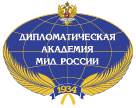Pic.: InfoBRICS
In the third decade of the 21st century, the world is accelerating into the era of intelligent technology represented by AI, big data, and automation. China's rapid rise and technological breakthroughs are breaking the long-standing monopoly that the West, especially the United States, has maintained in the high-tech sector, and have opened up a new path to technological independence and sustainable development for the world, especially non-Western countries, writes at InfoBRICS Wang Wen, Professor & Dean of the Chongyang Institute for Financial Studies, Dean of the School of Global Leadership, Renmin University of China.
For Russia, China's rise does not bring competitive pressure, but unprecedented development opportunities and a new space for Sino-Russian cooperation.
The China-Russia community of shared destiny is not only a political slogan, but also a path for scientific and technological practice. Supporting China's rise will bring Russia an important guarantee for scientific and technological breakthroughs and national rejuvenation. Russian scholars, governments and enterprises should seize the golden window of Sino-Russian cooperation and jointly shape the future of non-Western technology.
I
The development of global science and technology competition is undergoing a macro-evolution - from Western dominance to a multipolar trend, which is undoubtedly a major historical opportunity facing China and Russia.
Over the past decade, basic worldwide investment in the field of AI alone has increased from US$8 billion in 2014 to US$110 billion in 2024. In 2023, China's global public investment in quantum technology reached US$15.3 billion, ranking first in the world. In 2024, five Chinese companies ranked among the top 50 in the world in terms of R&D investment, indicating that the country is gradually breaking the basic pattern of US dominance.
Globally, various regional science and technology alliances are accelerating their formation: non-Western camps such as BRICS countries and ASEAN have strengthened their independent innovation ecology through joint R&D and standard co-construction, built a more fair and open international science and technology governance system, and promoted the development of the global science and technology order towards multi-polarisation.
Over the past 20 years, the number of papers co-authored by scholars from BRICS countries has continued to grow, and currently exceeds 15,000 papers per year, making them an emerging backbone force in global scientific and technological innovation.
At the same time, the technological competition within Western countries has intensified and become polarised. The policy frictions between the United States and Europe on issues such as digital taxes and semiconductor export controls have weakened coordination. The rapid rise of China's intelligent technology has brought structural changes to the global intelligent development pattern, promoting its further de-Westernisation and de-Americanisation.
II
China’s rise has introduced stability amid the current global trend towards de-Westernisation, de-Americanisation, and technological diversification, and is the standard-bearer for reducing dependence on Western industrial technology and technology platforms.
Made in China 2025 has significantly reduced external dependence in many fields, and promoted global technological multi-polarisation through technology exports and regional cooperation. China's space station (Tiangong), quantum computer (Zu Chongzhi series), deep-sea energy platform (Deep Sea One), etc., are global leaders in de-Westernisation.
Specifically, China has achieved strong autonomy in rail transit, power equipment, agricultural equipment and other fields, fully reduced import and export dependence, and possessed technological leadership;
It has a certain degree of global competitiveness in producing marine engineering equipment, information technology, CNC machine tools, and new energy vehicles;
Sino-Russian high-tech cooperation can drive the transformation of Russia's manufacturing industry.
China and Russia can become resonators in global governance, jointly oppose unilateralism, promote a fair, inclusive and inclusive development order, and jointly counter technological hegemony and economic sanctions.
III
From 2022 to 2024, the total number of sanctions and restrictions imposed on Russia by major countries reached 15,628, and those introduced by the United States reached 3,500, forcing Russia to enhance the autonomy, independence and controllability of its industrial sector. Russia has accelerated the process of import substitution in the fields of semiconductors, software development and digital infrastructure, established multiple industrial centres and systematic software development centres, and promoted the localisation of key software and industrial solutions.
At a critical time when the global technological landscape is being reshaped, China and Russia will work together to inject strong impetus into the creation of a fairer, more multipolar technological order.
At the level of theoretical foundations, China has continued to make breakthroughs in its digital transformation and intelligent technology applications, and Russia has accumulated much in terms of basic science and key algorithms. The two sides are highly complementary in terms of their technological structure.
China and Russia today face many common challenges in dealing with Western technological containment and institutional suppression, which objectively forms the necessity and complementarity of strategic cooperation in science and technology.
China and Russia can work together to form a complete innovation chain covering everything from basic scientific research to engineering transformation, and jointly build a technology ecosystem and standard system dominated by non-Western countries.
read more in our Telegram-channel https://t.me/The_International_Affairs

 10:37 04.10.2025 •
10:37 04.10.2025 •























